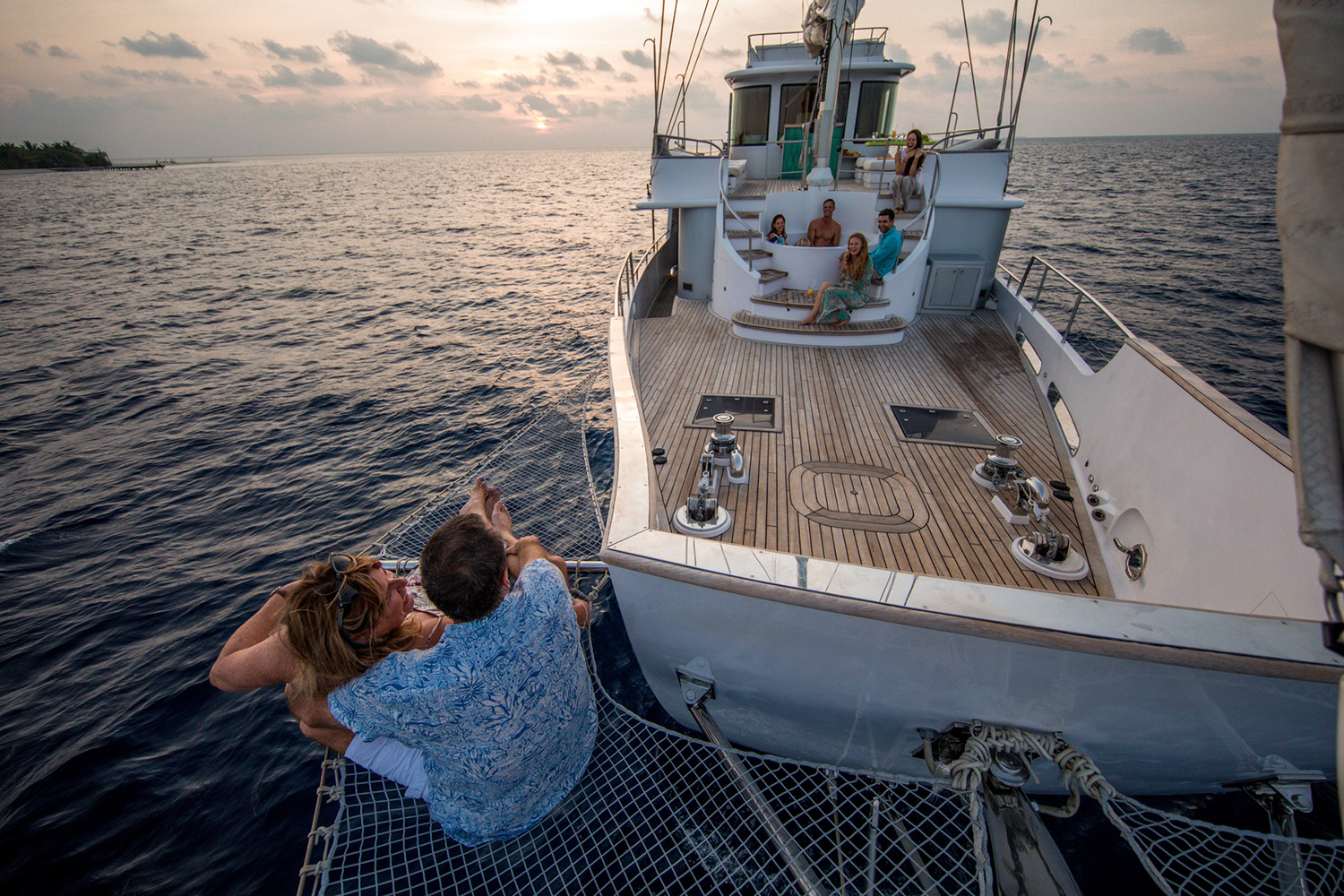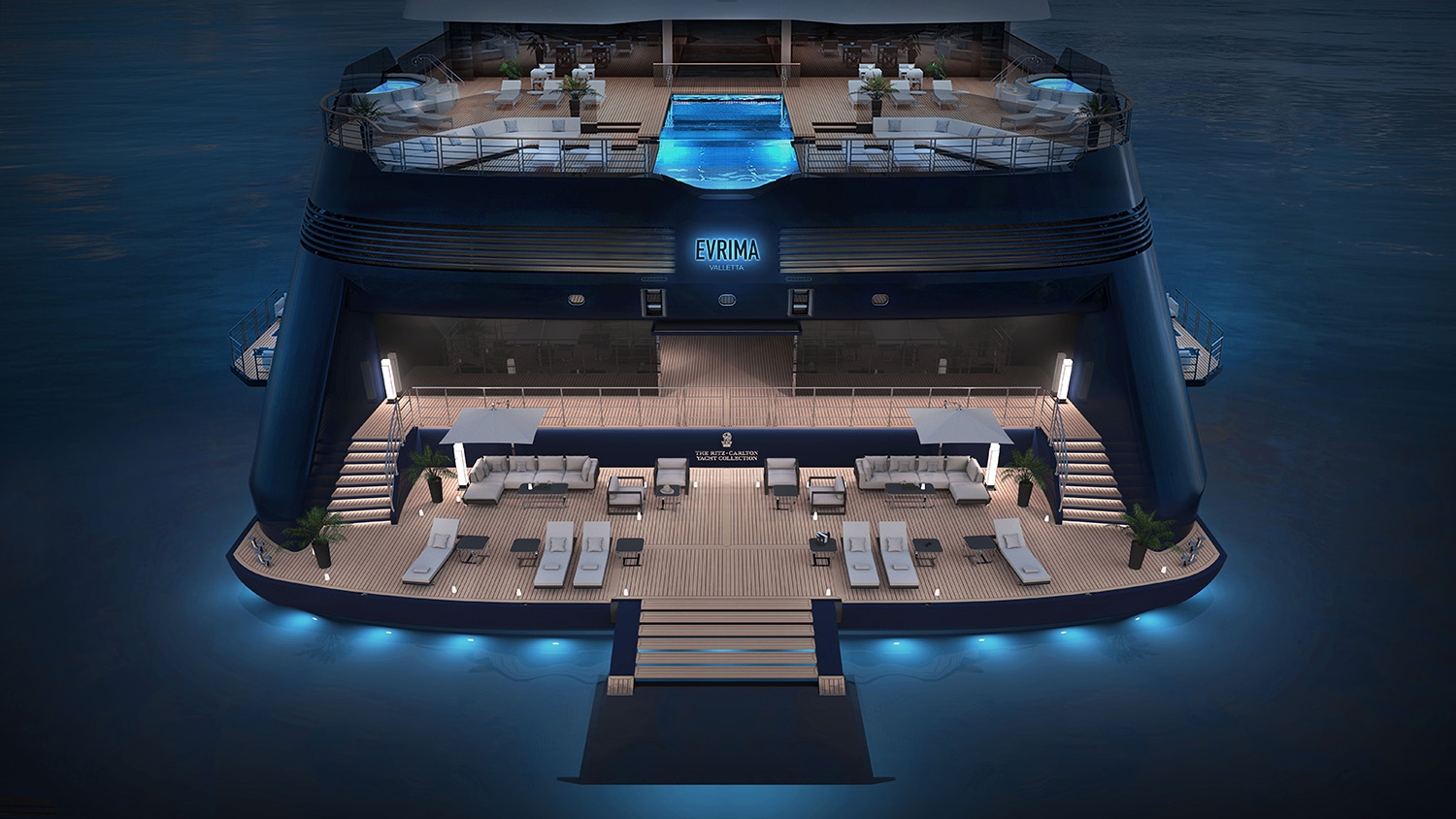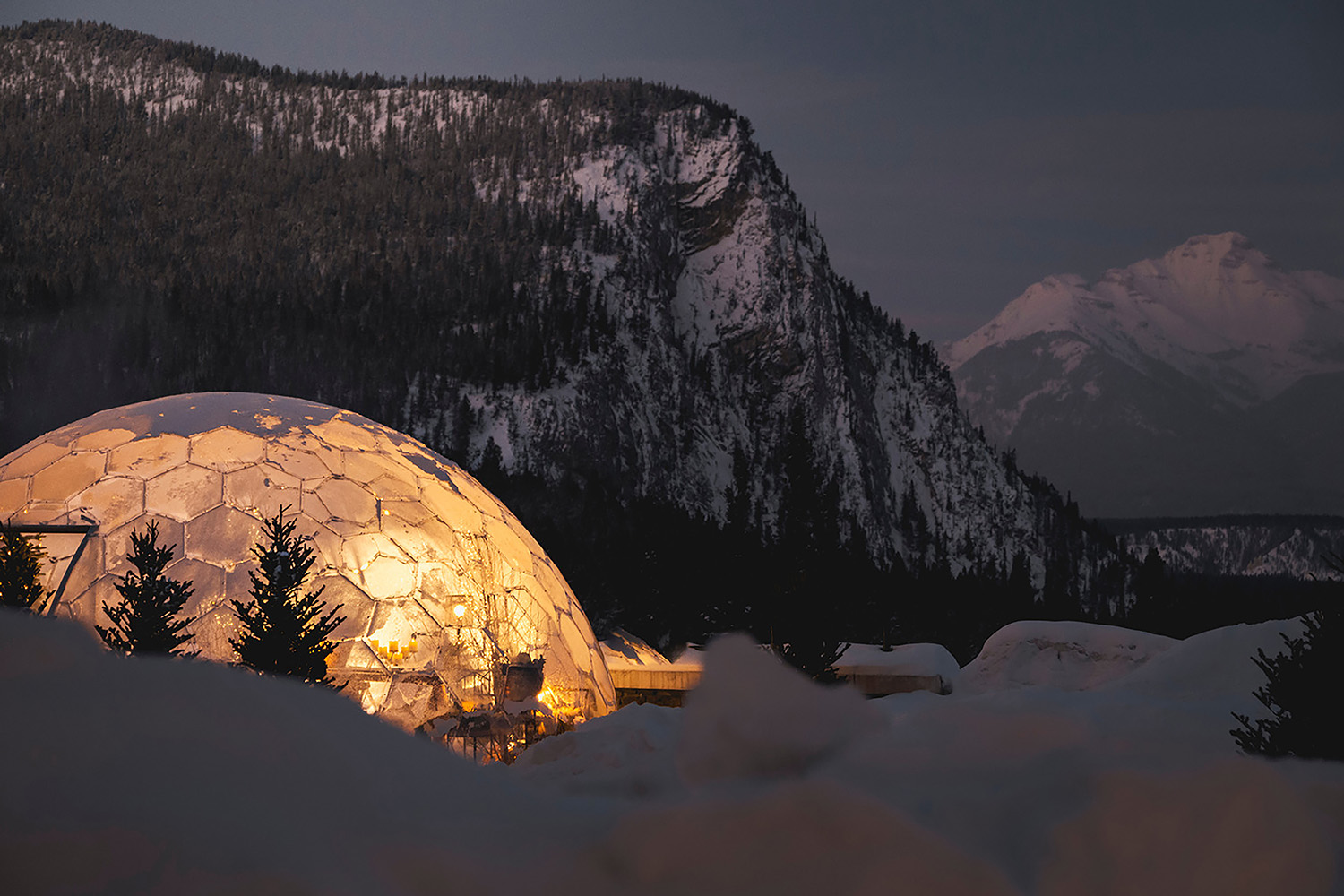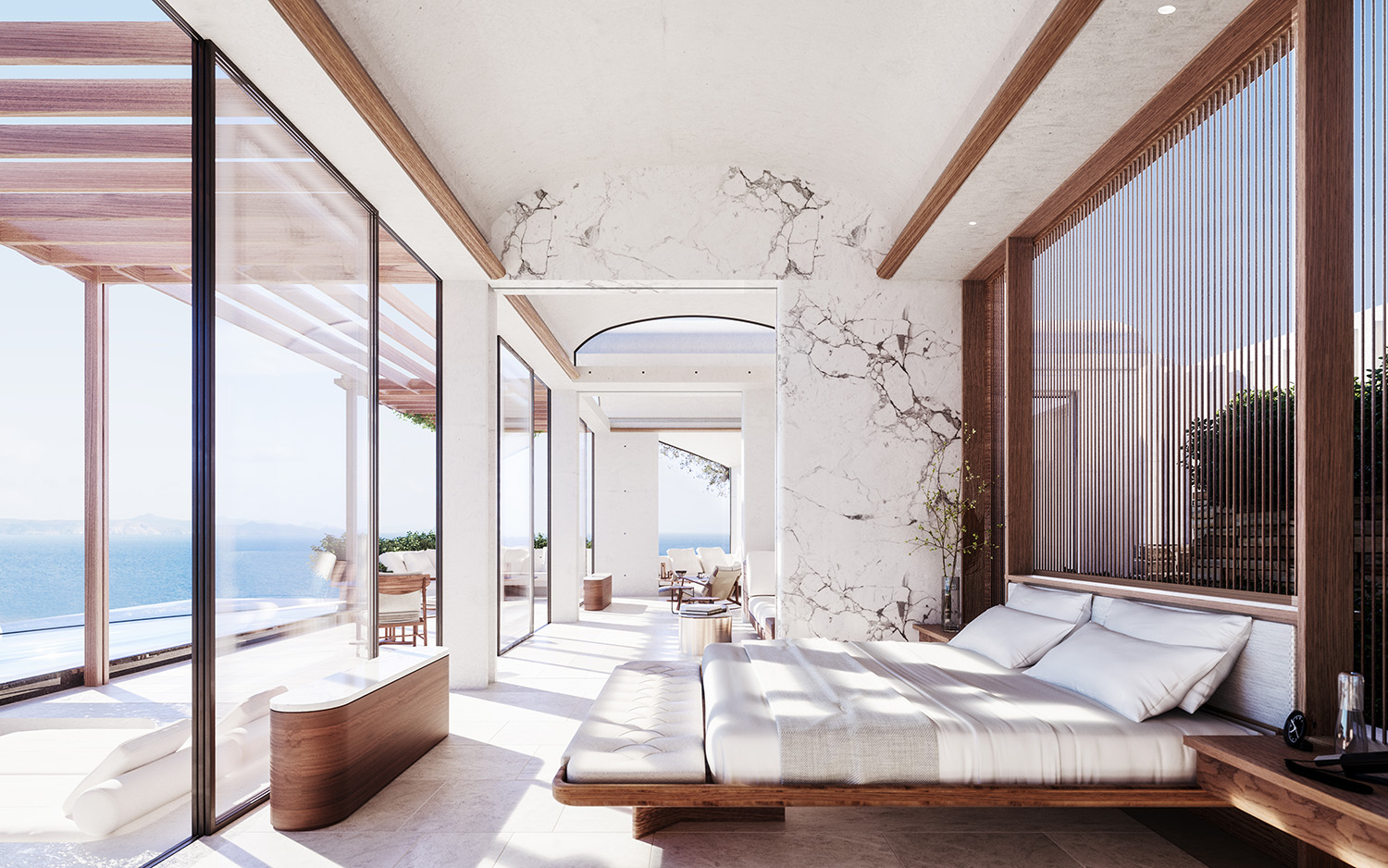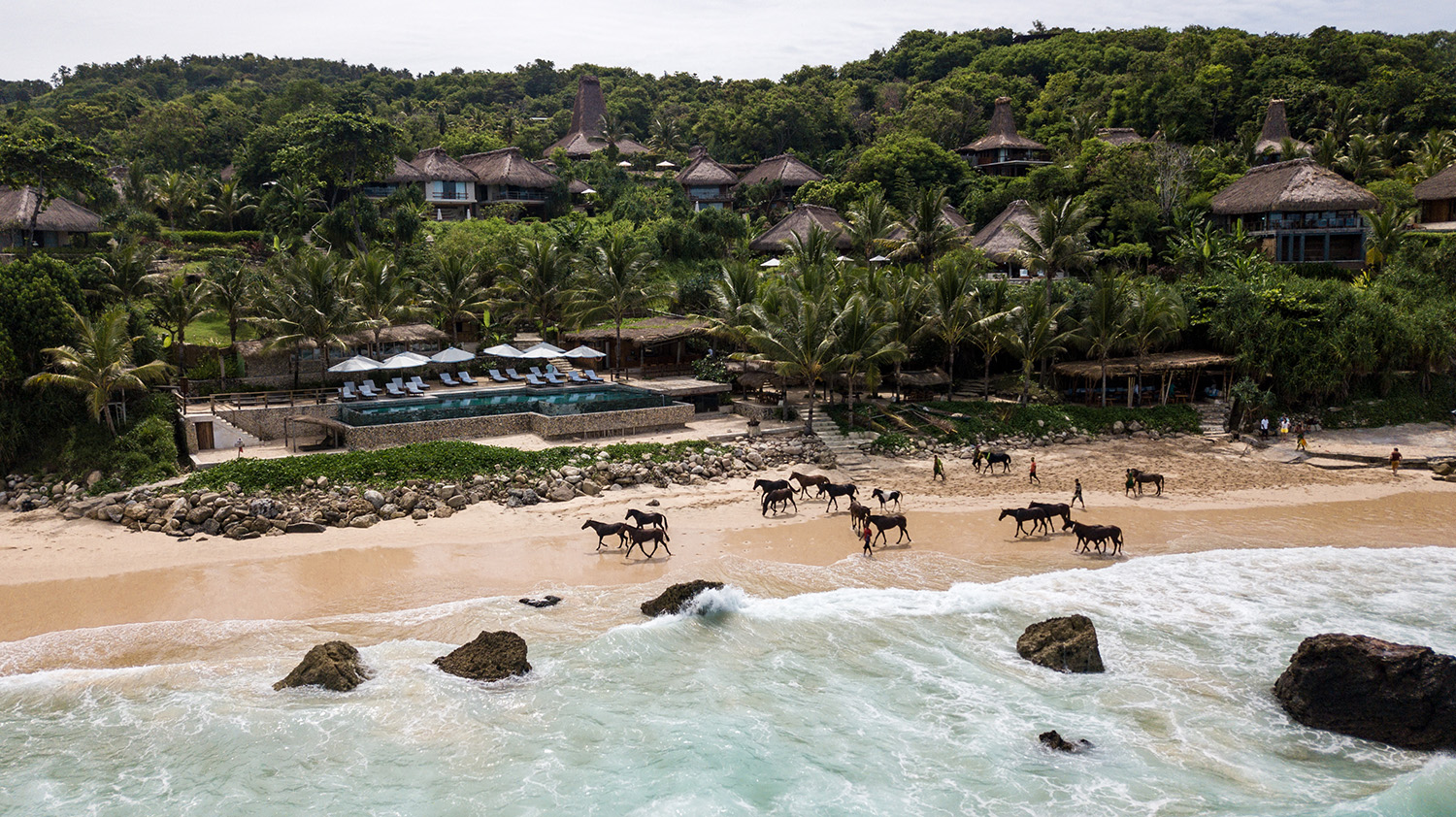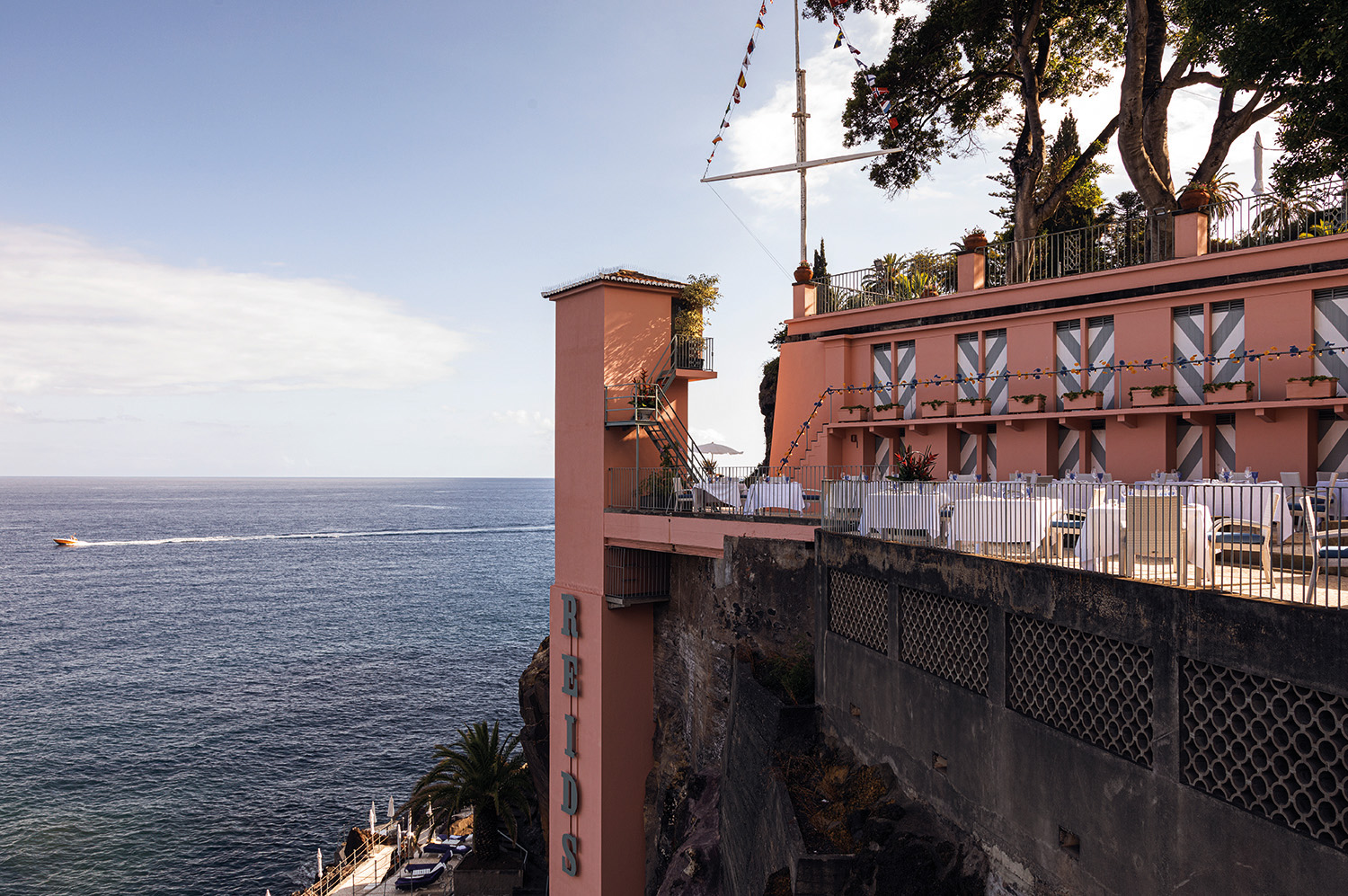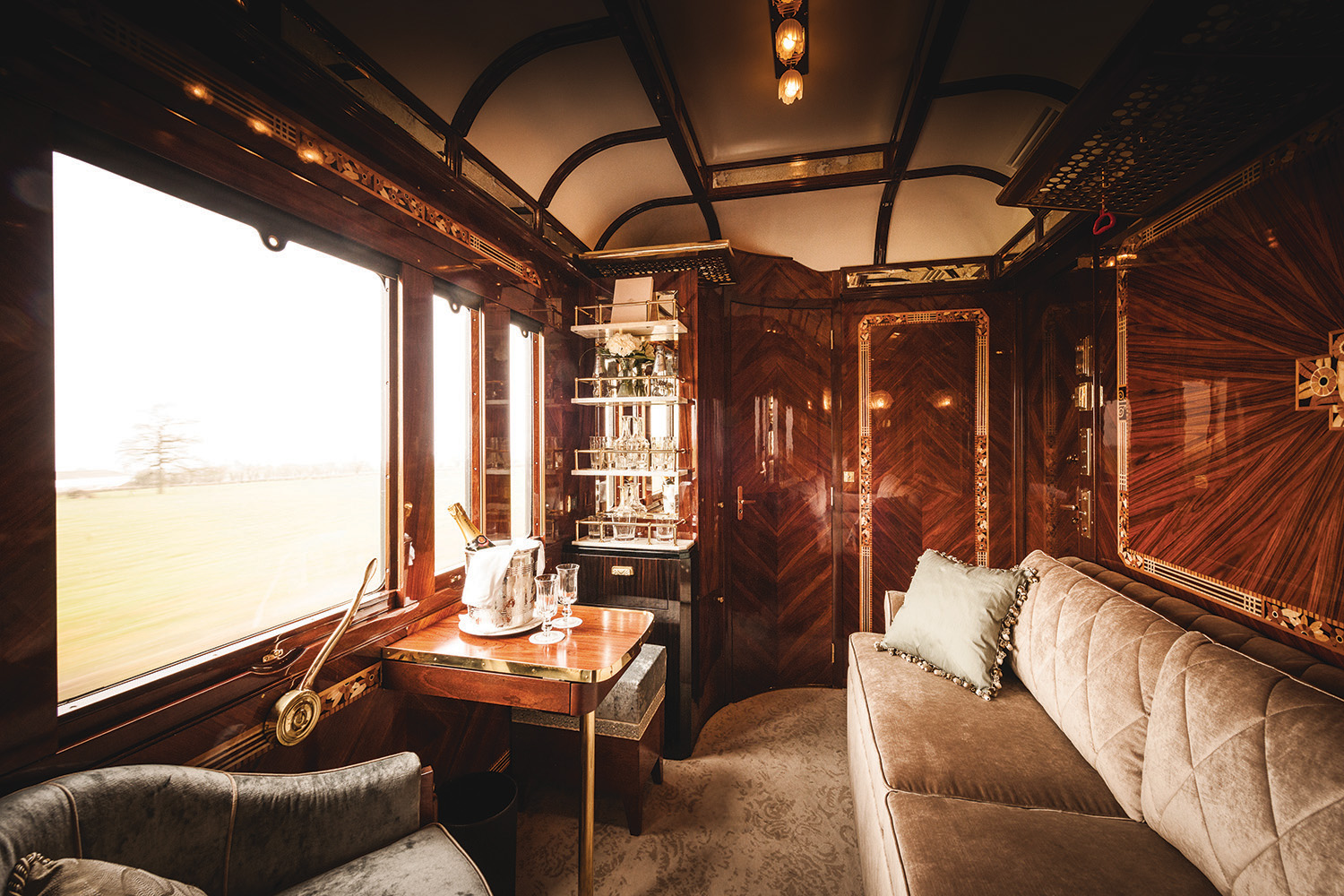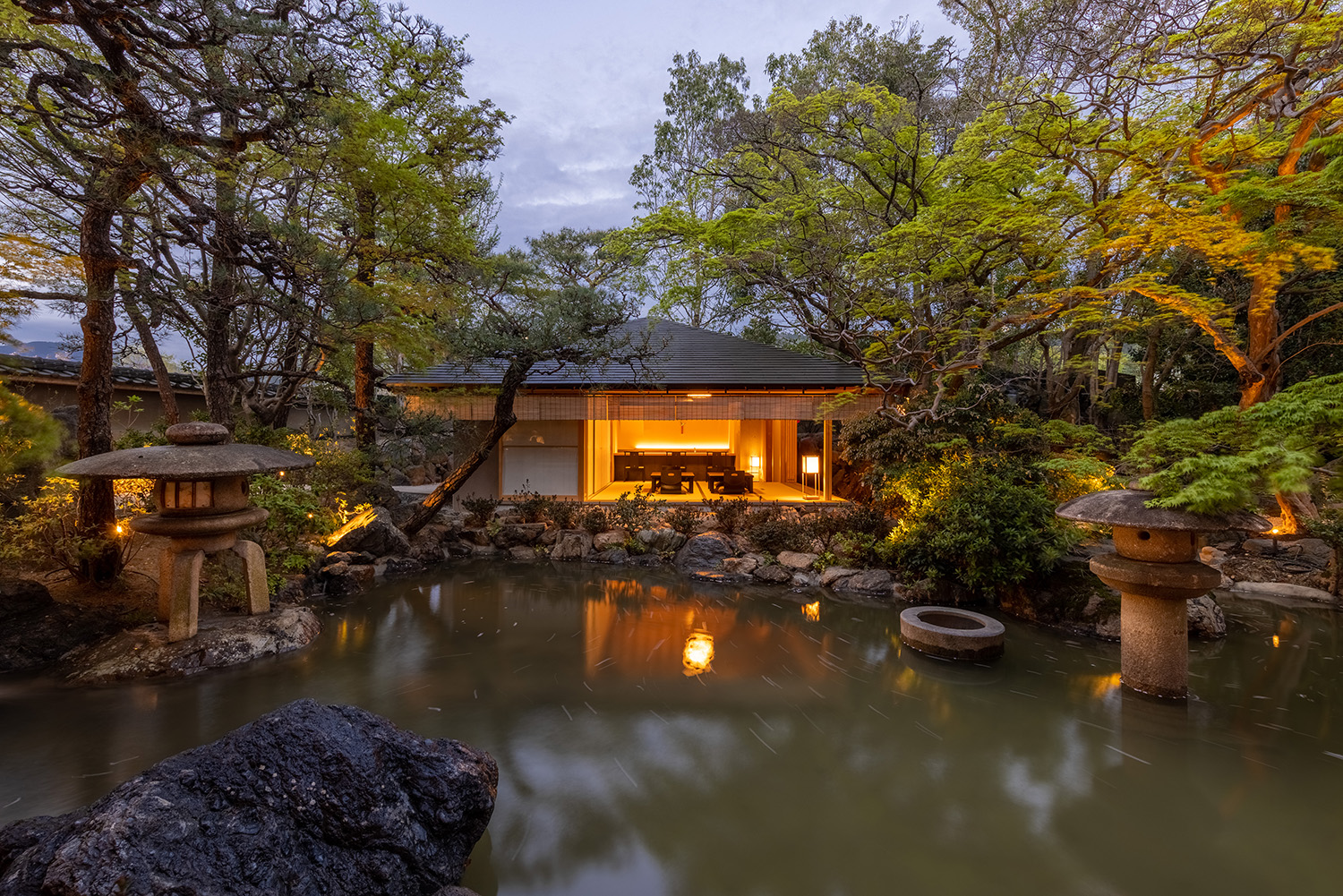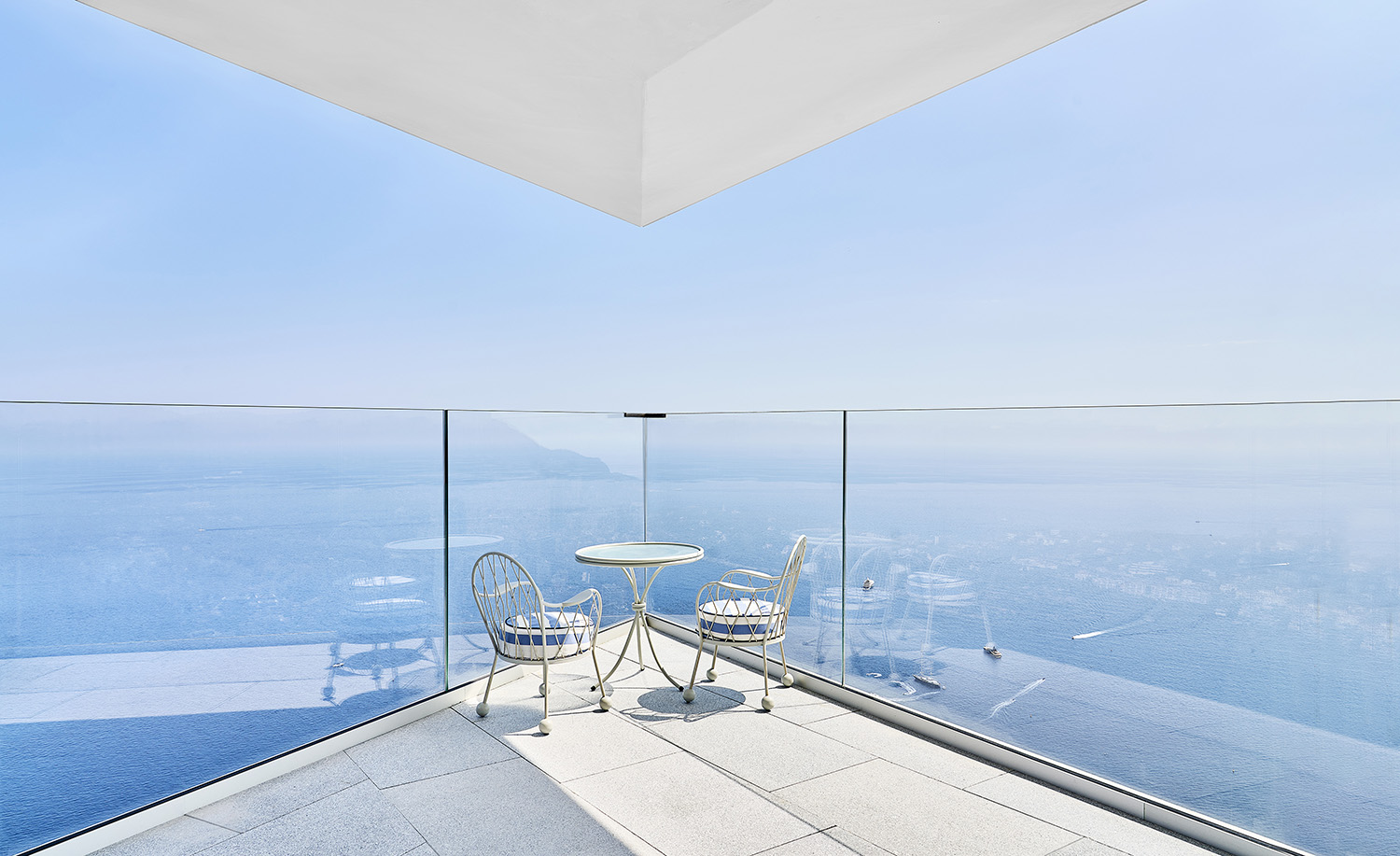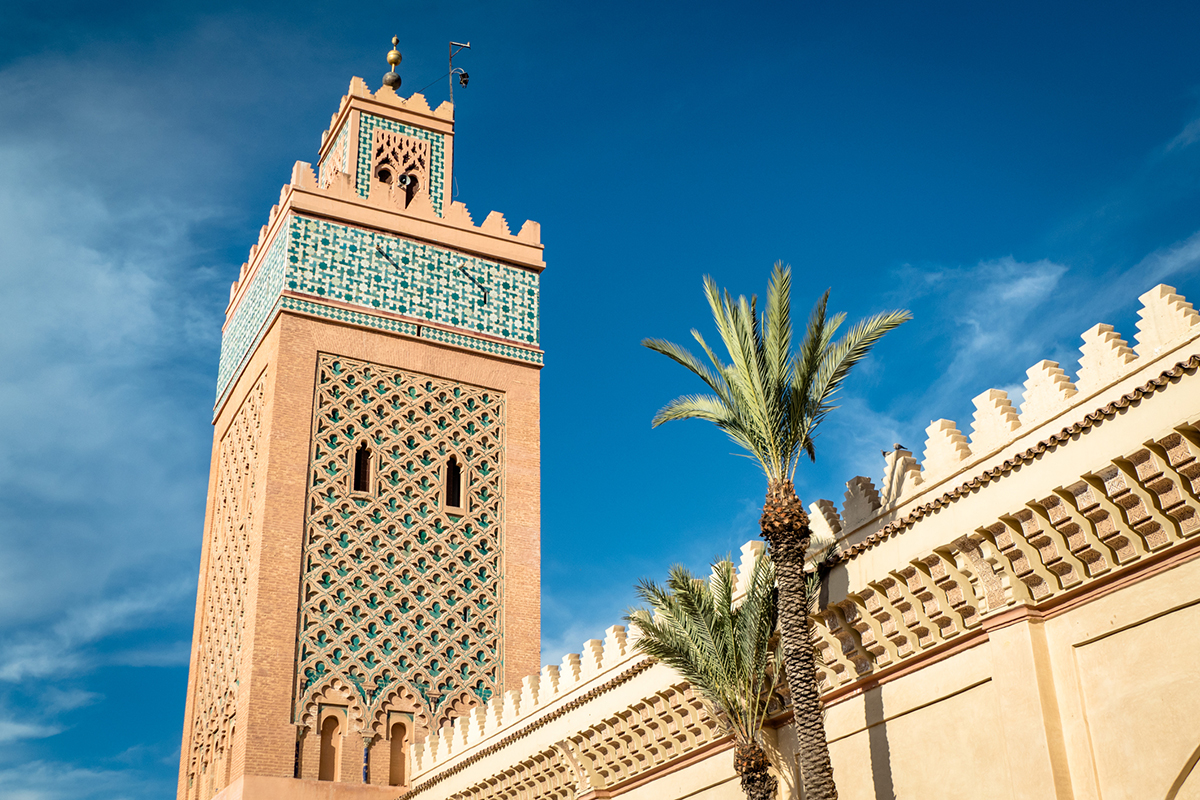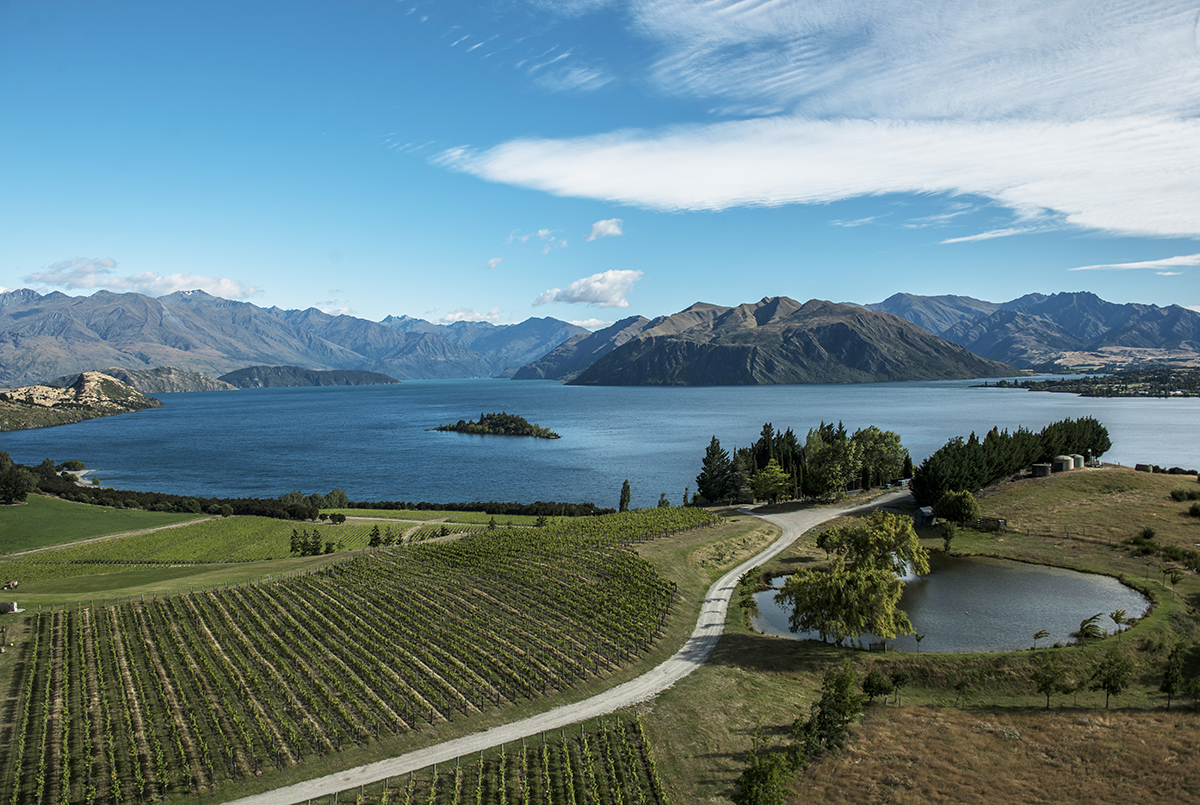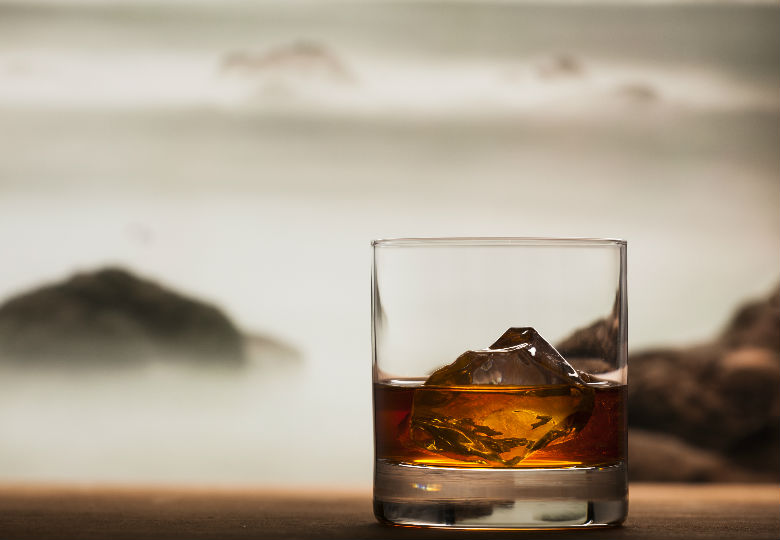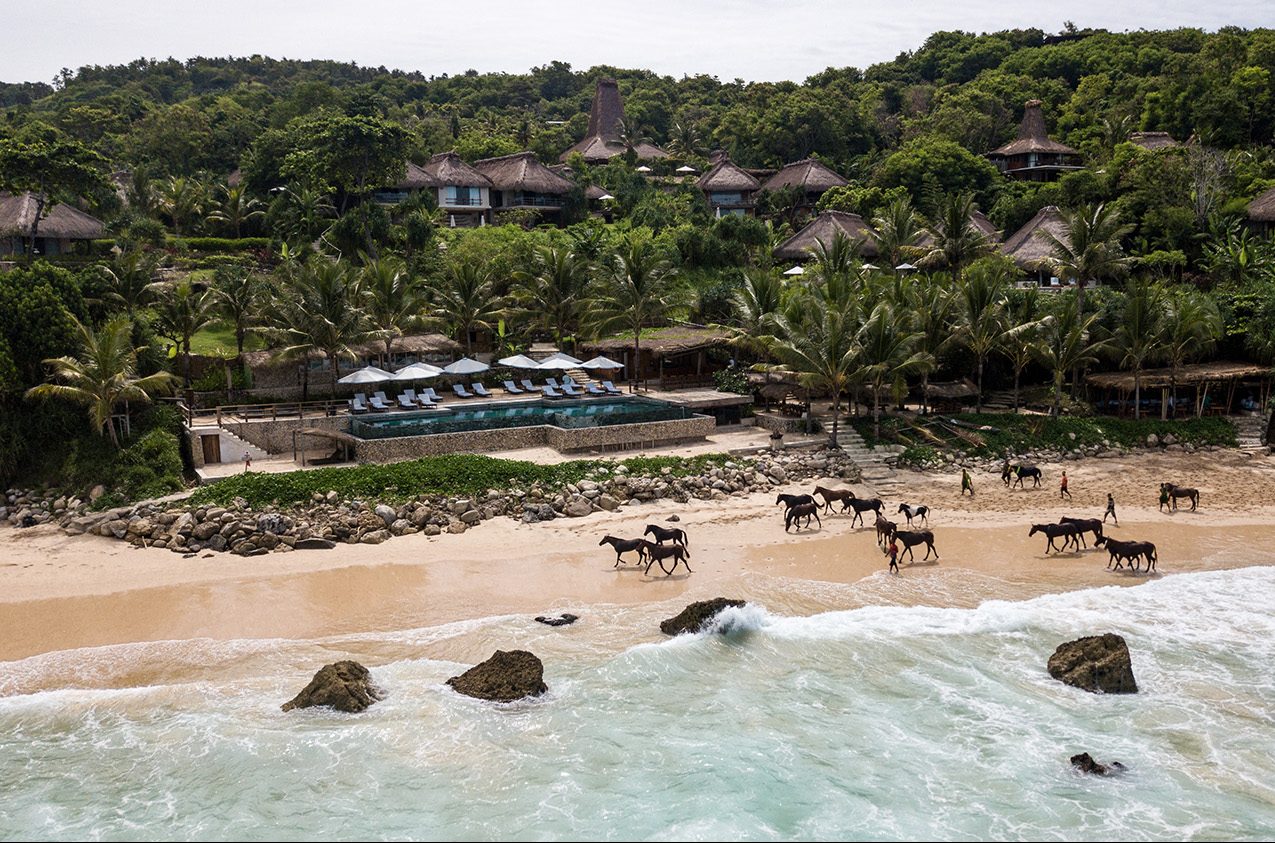
19 Ultimate Luxury Adventures And Destinations
The best is ahead with 2022’s best travel experiences.
Related articles
International travel is back, hotels are open and yachts are cruising again. Now is the perfect time to plan an escape in pure luxury.
From sipping diamond-studded martinis in Tokyo to chasing the snow on a whirlwind global ski tour, the ultimate new ANZ openings as well as Montenegro, the Maldives and more—we’ve crafted the ultimate list of 19 luxury adventures and destinations for the year ahead.
Maldive Must
Known for its barefoot-luxe ethos, Soneva champions taking your travels slowly and living in the moment, never compromising the environments you visit. The philosophy is embodied in the brand’s fourth retreat, Soneva Aqua. Private charters of this yacht usher you between two Maldivian escapes, Soneva Jani and Soneva Fushi, pausing so you can dive into gin-clear waters and drift past marine life (try the new “Dolphin Sled” experience), paddle to unpeopled sandbanks, or enjoy wake skating. You can hire Aqua for a day, but we recommend staying aboard overnight for alfresco dinners, stargazing with an astronomer
and moonlight snorkelling.
Global Ski Trip
From British Columbia in Canada to Niseko in Japan, from the Swiss Alps to remote northern Iceland, Scott Dunn’s “Epic Round the World Ski Trip” deserves its name. Over 33 days you’ll visit some of the world’s most fabled winter resorts, including Zermatt, Aspen Snowmass and Whistler. But this is no ordinary journey—your private plane and coordinated helicopters service far-flung locales, where you and your entourage will likely be the only ones on the soft stuff. Your time on the powder is sandwiched between city stays, glitzy mountain resorts and one-off experiences—like visiting an under-glacier ice palace, checking in to Aman Tokyo or swooping over Vancouver in a seaplane. It doesn’t get much cooler.
Sail Away
Known for its prestigious portfolio of hotels and resorts, the Ritz-Carlton group will soon enter deep water with the launch of three yachts in 2022. Each of the ships’ 149 suites comes with trimmings you’d expect of the company. Top pick is the Owners Suite, replete with whirlpool plus indoor and outdoor dining areas. Call on a butler to arrange sumptuous in-room dining, or stroll to one of the six specialty restaurants serving everything from European-influenced degustations
to mod-Southeast Asian fare—there’s even a humidor specialising in imported cigars and cognac. While cruising warm waters in the Caribbean or the coastline of Canada, make the most of the spa and extensive selection of water toys in your ship’s marina.
ritzcarltonyachtcollection.com
Montenegro’s Moment
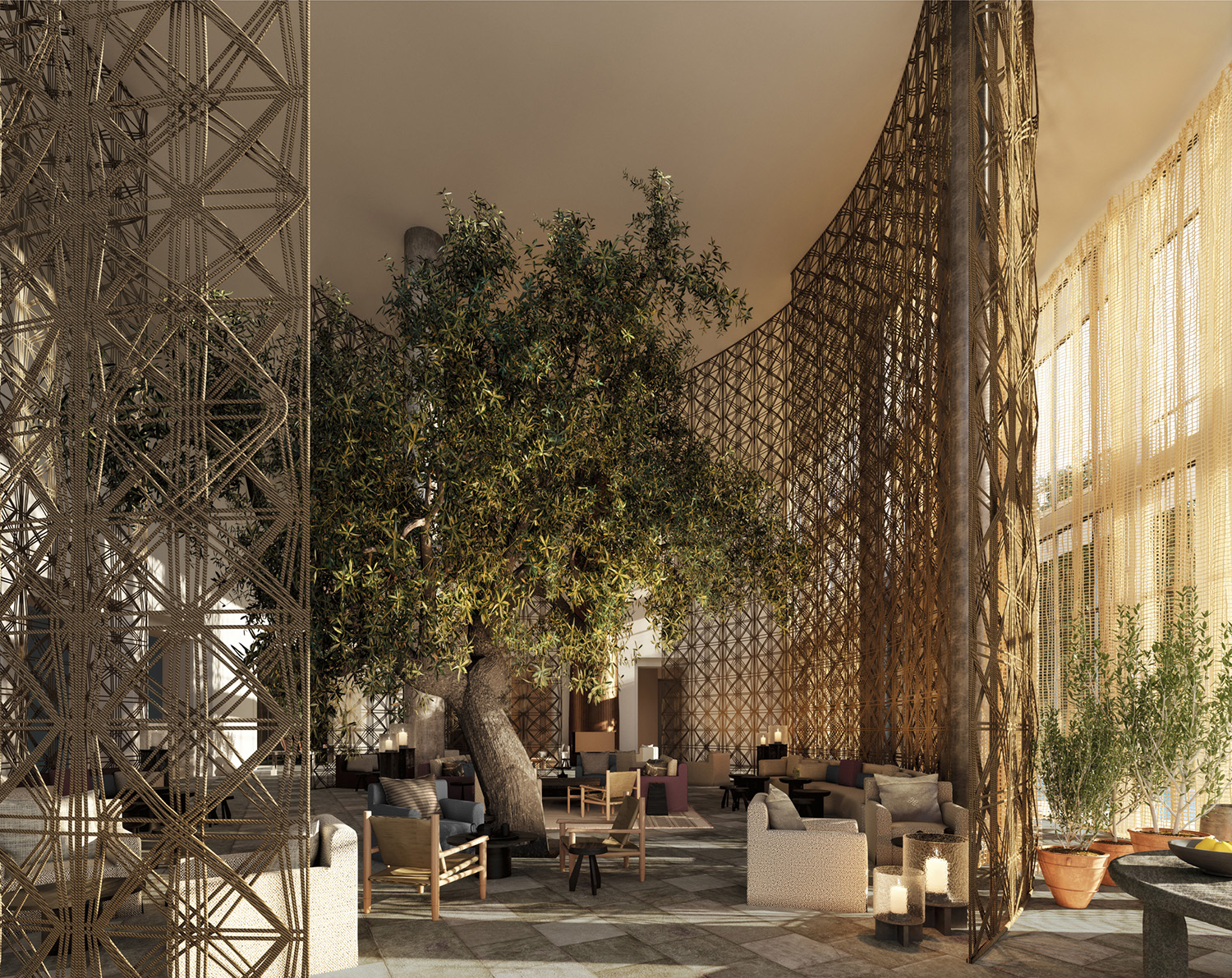
Full Circle Dining
If you thought the Canadian Rocky Mountains couldn’t get any prettier, think again. Welcome to the 360° Dome at the Fairmont Banff Springs, a winter-chic, glass-encased dining room with space for you and five close friends. Soak up mountain and castle views while enjoying mimosas and pancakes for brunch, sip Canadian wine paired with charcuterie and cheese in the afternoon, or savour a five-course evening degustation: long-bone bison short ribs and Brant Lake wagyu carpaccio are standouts.
Greece Is The Word
You need no further reason to visit Greece’s archipelago, but if you’re looking for inspiration, find it at the One&Only Kéa Island. Opening in 2022 on the west coast of Kéa in the Cyclades, the beachfront retreat boasts light and breezy rooms, suites and villas, as well as a collection of private homes for those who can’t bear to leave. While the ferry is an option for arrival from Lavrio Harbour, we instead recommend jumping in a speedboat for a James Bond approach. Back on the mainland, check in to the freshly minted One&Only Aesthesis in the capital, which—thanks to its forested setting on the Glyfada seafront—still exudes the exclusive ambiance of the Greek isles. The original bungalows and beach club along this stretch of sand were a glamorous hideaway for the jet-set crowd in the 1950s. Architects today have transformed them into nature-inspired havens, with woven leather, muted tones and accent patterns nodding to Greek mythology.
Indonesian Adventure
Admire manta rays as you snorkel. Discover secret island waterfalls. Swim with horses (it’s a thing). The Aqua Expeditions x NIHI Sumba partnership offers many such opportunities to explore Indonesia. The seven-night sojourn begins with cruising the archipelago on 15-suite Aqua Blu. You’ll drop in on Komodo National Park to visit its dragons, hike Padar Island for sunrise views over Flores, and dive around Gili Lawah—all before landing on Sumba. Here, your retreat for the next three nights has taken home just about every design award imaginable. For good reason. The 28 NIHI villas include private pools, canopy beds and curated minibars, all cocooned among rainforest.
Exclusive Sydney Opera House
Imagine having this iconic building all to yourself. The curtains sweep back, a soprano steps onto the stage, and your evening unfolds with an operatic recital, just for you. The “Taste of the Opera” experience also includes a private tour of the World Heritage-listed structure, ushering you behind the scenes, and ending with dinner.
culturalattractionsofaustralia.com
Greatest Safari On Earth
Twelve days. Ten guests. Four African countries. A private Emirates jet, hot-air balloon and helicopter safaris. Plus some of the most dreamy accommodation across the continent. This is just the start of your Roar Africa “Greatest Safari on Earth”. Sumptuous suites comprise your sky-high chariot between destinations, which include Victoria Falls in Zimbabwe, the Okavango Delta in Botswana, Kenya’s vast Maasai Mara and the jungles of Rwanda. Best of all? The trip is 100 per cent carbon neutral, with a strong focus on issues of sustainability.
Proper Portugal
For more than a century, the who’s who have checked in to Belmond Reid’s Palace, the grande dame of Madeira celebrating her 130th birthday in 2021. She ticked off another year in customary style, welcoming guests to renovated rooms with period furnishings and old-world charm that nods to the region’s one-time British inhabitants. Set on the largest island in the Portuguese archipelago, diversions include a private jet-boat journey over the waves to the Desertas Islands, dolphins and whales and rare Mediterranean monk seals all around. Reid’s Palace also accommodates Michelin-starred William Restaurant, whose menu celebrates the island in dishes like tomato and plum gazpacho with smoked eel, or grilled scallops with pine tree vinaigrette.
The Original Orient Express
Before private jets, there was the Orient Express, linking Paris and Istanbul in style. The opulent train is now the Venice Simplon-Orient-Express, and still connects two of the continent’s most fascinating cities. It’s on the rails every day, carrying passengers between the likes of London, Paris and Venice, with new routes to Amsterdam, Geneva, Rome and Florence. But the annual 10-day epic between the original destinations piques the interest of the elite. Expect personalised service and generous accommodations.
The Crown Of Versailles
Channel your inner king or queen with an overnight stay in an ornate 17th-century palace. Freshly minted Airelles Château de Versailles occupies Europe’s most lavish royal residence, a place Louis XVI and Marie Antoinette once called home. The couple’s opulent style inspired the design of the hotel’s 14 suites, each individually outfitted with restored period furniture, artworks, chandeliers and antiques—not to mention swoon-worthy views over the orangerie (fruit orchard) and lake. Guests can tour areas of the Château normally closed to visitors, plus enjoy crowd-free, after-hours access to popular rooms, like the Hall of Mirrors. Adorn your stay with any of a host of add-ons, from a Marie Antoinette–themed costume fitting to private dining with a live string quartet in the former apartment of Louis XV’s daughters. Also dine in style at celebrated chef Alain Ducasse’s restaurant within the Pavilion Dufour; time your visit to coincide with one of his exclusive themed dinners.
Kyoto Calling
Japanese city Kyoto hosts its share of upscale ryokans, uniting shibui (simple, subtle and unobtrusive beauty) with haiteku (high-tech features). The latest to embrace these principles is Fufu, where guests wander zen gardens of bonsai, maple and blossoms before reaching their rooms, each of which sports a hinoki-wood tub for soaking in mineral springs. A multi-course kaiseki meal celebrating the seasons, and your chef’s impeccable sense of presentation, is best followed by one of Fufu’s immersive experiences, whether meeting a geisha or learning the fine art of ikebana (flower arranging).
Maybourne Riviera
Just a 10-minute helicopter jaunt from Monte-Carlo Airport lies the new Maybourne Riviera, coveting a stellar spot on southern France’s Côte d’Azure. Your room or suite—one of only 69—offers views over the terracotta rooftops and olive groves of Roquebrune-Cap-Martin, the Mediterranean Sea and further on to Italy and Monaco. In contrast to the town it calls home, replete with a medieval village and castle, the hotel is strikingly modernist. It’s all clean lines and juxtaposing curves, deep blues and flashes of gold, with sufficient white in between to make you feel like you’ve slipped into Greece. As expected in this part of Europe, food is a focus: chefs Mauro Colagreco (his three Michelin stars are displayed at his eatery Mirazur in nearby Menton) and Jean-Georges Vongerichten were called in to oversee its five restaurants and bars.
Mondrian Gold Coast
From Miami to Doha, the Mondrian hotel brand is summed up in one word: personality. Each of the eight existing properties exhibits a unique identity, as does the ninth in the portfolio—Mondrian Gold Coast. Its 208 hotel rooms and private residences occupy two gleaming towers—this is the “Goldie” after all—both just steps from the sand of Burleigh Heads. This beach boasts some of Australia’s most reliably good waves, so it’s no surprise that one of the perks of checking in here is a surf instructor on call to help you tackle the swell.
Global Private Jet Tour
Enlist 49 of your closest friends on DreamMaker’s “Passport to 50” private-jet package. This globetrotting journey is possibly the most extravagant ever, with
a price tag exceeding eight figures. But what fun you’ll have over 20 action-packed days, visiting 20 cities—including Kathmandu, Florence, Marrakesh, Ibiza and Havana—while circumnavigating the globe. While airborne, you’re travelling in a privately outfitted Boeing 767 business-class jet. On the ground, you’ll check in to hotels that defy belief and enjoy experiences only possible thanks to your accompanying staff of 50—one for every guest. To top it all off, each guest is gifted a custom 18-karat gold swizzle stick, adorned with a golden globe bearing 20 white diamonds. That’s a US$1 million goodie bag.
New Zealand Heli Tour
New Zealand’s South Island is remote. And your helicopter’s landing site—a windswept west coast cove—is all but deserted. In fact, you can only arrive here by chopper or boat. When you touch down after a scenic twirl over the Southern Alps, your on-board diver (yes!) jumps into the frigid waters to collect crayfish for your supper. Once your bounty is bagged, your pilot sets the GPS for a glacier, where champers is sipped while you contemplate the enormity of this region. Back at Queenstown’s The Rees hotel, your ocean-fresh catch is transformed into an epic meal served up in True South Dining Room. Priceless.
Diamonds Are Forever
… unless you swallow them in your martini. Though please don’t do that—because you’ll be consuming a $31,000 one-carat diamond sitting pretty in the bottom of your glass at the Ritz-Carlton Tokyo’s bar. Order the Elyx vodka cocktail shaken, not stirred (its only other ingredient is lime juice) while musicians serenade with Shirley Bassey’s 007 song celebrating the gem.
This piece is from our new Car Of The Year Issue – on sale now. Get your copy or subscribe here, or stay up to speed with the Robb Report weekly newsletter.
Subscribe to the Newsletter
Recommended for you
For Peat’s Sake: Scotland’s ‘Whisky Island’
There’s a reason Islay produces some of the world’s most characterful whisky. And it’s hidden in the undergrowth.
By Nick Ryan
July 22, 2024
How Paris’s Dining, Hotel and Art Scene Got Their Groove Back — Just in Time for the Olympics
The French capital’s cultural life was already on the upswing. Mix in a major global sporting event, and it’s now ready to go toe to toe with any city in the world.
By Vivian Song
July 9, 2024
You may also like.
By Josh Bozin
24/07/2024
You may also like.
5 Lounge Chairs That Add Chic Seating to Your Space
Daybeds, the most relaxed of seating solutions, offer a surprising amount of utility.
Chaise longue, daybed, recamier, duchesse brisée—elongated furniture designed for relaxing has a roster of fancy names. While the French royal court of Louis XIV brought such pieces to prominence in fashionable European homes, the general idea has been around far longer: The Egyptian pharaohs were big fans, while daybeds from China’s Ming dynasty spurred all those Hollywood Regency fretwork pieces that still populate Palm Beach living rooms. Even Mies van der Rohe, one of design’s modernist icons, got into the lounge game with his Barcelona couch, a study of line and form that holds up today.
But don’t get caught up in who invented them, or what to call them. Instead, consider their versatility: Backless models are ideal in front of large expanses of glass (imagine lazing on one with an ocean view) or at the foot of a bed, while more structured pieces can transform any corner into a cozy reading nook. Daybeds may be inextricably linked to relaxation, but from a design perspective, they put in serious work.

Emmy, Egg Collective
In designing the Emmy chaise, the Egg Collective trio of Stephanie Beamer, Crystal Ellis and Hillary Petrie, who met as students at Washington University in St. Louis, aimed for versatility. Indeed, the tailored chaise looks equally at home in a glass skyscraper as it does in a turn-of-the-century town house. Combining the elegance of a smooth, solid oak or walnut frame with the comfort of bolsters and cushioned upholstery or leather, it works just as well against a wall or at the heart of a room. From around $7,015; Eggcollective.com
 Plum, Michael Robbins
Plum, Michael Robbins
Woodworker Michael Robbins is the quintessential artisan from New York State’s Hudson Valley in that both his materials and methods pay homage to the area. In fact, he describes his style as “honest, playful, elegant and reflective of the aesthetic of the Hudson Valley surroundings”. Robbins crafts his furniture by hand but allows the wood he uses to help guide the look of a piece. (The studio offers eight standard finishes.) The Plum daybed, brought to life at Robbins’s workshop, exhibits his signature modern rusticity injected with a hint of whimsy thanks to the simplicity of its geometric forms. Around $4,275; MichaelRobbins.com

Kimani, Reda Amalou Design
French architect and designer Reda Amalou acknowledges the challenge of creating standout seating given the number of iconic 20th-century examples already in existence. Still, he persists—and prevails. The Kimani, a bent slash of a daybed in a limited edition of eight pieces, makes a forceful statement. Its leather cushion features a rolled headrest and rhythmic channel stitching reminiscent of that found on the seats of ’70s cars; visually, these elements anchor the slender silhouette atop a patinated bronze base with a sure-handed single line. The result: a seamless contour for the body. Around $33,530; RedaAmalou
Dune, Workshop/APD
From a firm known for crafting subtle but luxurious architecture and interiors, Workshop/APD’s debut furniture collection is on point. Among its offerings is the leather-wrapped Dune daybed. With classical and Art Deco influences, its cylindrical bolsters are a tactile celebration, and the peek of the curved satin-brass base makes for a sensual surprise. Associate principal Andrew Kline notes that the daybed adeptly bridges two seating areas in a roomy living space or can sit, bench-style, at the foot of a bed. From $13,040; Workshop/ APD
Sherazade, Edra
Designed by Francesco Binfaré, this sculptural, minimalist daybed—inspired by the rugs used by Eastern civilizations—allows for complete relaxation. Strength combined with comfort is the name of the game here. The Sherazade’s structure is made from light but sturdy honeycomb wood, while next-gen Gellyfoam and synthetic wadding aid repose. True to Edra’s amorphous design codes, it can switch configurations depending on the user’s mood or needs; for example, the accompanying extra pillows—one rectangular and one cylinder shaped— interchange to become armrests or backrests. From $32,900; Edra
You may also like.
By Josh Bozin
24/07/2024
22/07/2024
Watches & Wonders 2024 Showcase: Hermès
We head to Geneva for the Watches & Wonders exhibition; a week-long horological blockbuster featuring the hottest new drops, and no shortage of hype.
With Watches & Wonders 2024 well and truly behind us, we review some of the novelties Hermès presented at this year’s event.
—
HERMÈS

Moving away from the block colours and sporty aesthetic that has defined Hermès watches in recent years, the biggest news from the French luxury goods company at Watches & Wonders came with the unveiling of its newest collection, the Hermès Cut.
It flaunts a round bezel, but the case middle is nearer to a tonneau shape—a relatively simple design that, despite attracting flak from some watch aficionados, works. While marketed as a “women’s watch”, the Cut has universal appeal thanks to its elegant package and proportions. It moves away from the Maison’s penchant for a style-first product; it’s a watch that tells the time, not a fashion accessory with the ability to tell the time.
Hermès gets the proportions just right thanks to a satin-brushed and polished 36 mm case, PVD-treated Arabic numerals, and clean-cut edges that further accentuate its character. One of the key design elements is the positioning of the crown, boldly sitting at half-past one and embellished with a lacquered or engraved “H”, clearly stamping its originality. The watch is powered by a Hermès Manufacture movement H1912, revealed through its sapphire crystal caseback. In addition to its seamlessly integrated and easy-wearing metal bracelet, the Cut also comes with the option for a range of coloured rubber straps. Together with its clever interchangeable system, it’s a cinch to swap out its look.
It will be interesting to see how the Hermès Cut fares in coming months, particularly as it tries to establish its own identity separate from the more aggressive, but widely popular, Ho8 collection. Either way, the company is now a serious part of the dialogue around the concept of time.
—
Read more about this year’s Watches & Wonders exhibition at robbreport.com.au
You may also like.
22/07/2024
Living La Vida Lagerfeld
The world remembers him for fashion. But as a new tome reveals, the iconoclastic designer is defined as much by extravagant, often fantastical, homes as he is clothes.
“Lives, like novels, are made up of chapters”, the world-renowned bibliophile, Karl Lagerfeld, once observed.
Were a psychological-style novel ever to be written about Karl Lagerfeld’s life, it would no doubt give less narrative weight to the story of his reinvigoration of staid fashion houses like Chloe, Fendi and Chanel than to the underpinning leitmotif of the designer’s constant reinvention of himself.
In a lifetime spanning two centuries, Lagerfeld made and dropped an ever-changing parade of close friends, muses, collaborators and ambiguous lovers, as easily as he changed his clothes, his furniture… even his body. Each chapter of this book would be set against the backdrop of one of his series of apartments, houses and villas, whose often wildly divergent but always ultra-luxurious décor reflected the ever-evolving personas of this compulsively public but ultimately enigmatic man.
With the publication of Karl Lagerfeld: A Life in Houses these wildly disparate but always exquisite interiors are presented for the first time together as a chronological body of work. The book indeed serves as a kind of visual novel, documenting the domestic dreamscapes in which the iconic designer played out his many lives, while also making a strong case that Lagerfeld’s impact on contemporary interior design is just as important, if not more so, than his influence on fashion.

In fact, when the first Lagerfeld interior was featured in a 1968 spread for L’OEil magazine, the editorial describes him merely as a “stylist”. The photographs of the apartment in an 18th-century mansion on rue de Université, show walls lined with plum-coloured rice paper, or lacquered deepest chocolate brown in sharp contrast to crisp, white low ceilings that accentuated the horizontality that was fashionable among the extremely fashionable at the time. Yet amid this setting of aggressively au courant modernism, the anachronistic pops of Art Nouveau and Art Deco objects foreshadow the young Karl’s innate gift for creating strikingly original environments whose harmony is achieved through the deft interplay of contrasting styles and contexts.
Lagerfeld learned early on that presenting himself in a succession of gem-like domestic settings was good for crafting his image. But Lagerfeld’s houses not only provided him with publicity, they also gave him an excuse to indulge in his greatest passion. Shopping!
By 1973, Lagerfeld was living in a new apartment at Place Saint–Sulpice where his acquisition of important Art Deco treasures continued unabated. Now a bearded and muscular disco dandy, he could most often be found in the louche company of the models, starlets and assorted hedonistic beauties that gathered around the flamboyant fashion illustrator Antonio Lopez. Lagerfeld was also in the throes of a hopeless love affair with Jacques de Bascher whose favours he reluctantly shared with his nemesis Yves Saint Laurent.

He painted the rooms milky white and lined them with specially commissioned carpets—the tawny patterned striations of which invoked musky wild animal pelts. These lent a stark relief to the sleek, machine-age chrome lines of his Deco furnishings. To contemporary eyes it remains a strikingly original arrangement that subtly conveys the tensions at play in Lagerfeld’s own life: the cocaine fuelled orgies of his lover and friends, hosted in the pristine home of a man who claimed that “a bed is for one person”.
In 1975, a painful falling out with his beloved Jacques, who was descending into the abyss of addiction, saw almost his entire collection of peerless Art Deco furniture, paintings and objects put under the auctioneer’s hammer. This was the first of many auction sales, as he habitually shed the contents of his houses along with whatever incarnation of himself had lived there. Lagerfeld was dispassionate about parting with these precious goods. “It’s collecting that’s fun, not owning,” he said. And the reality for a collector on such a Renaissance scale, is that to continue buying, Lagerfeld had to sell.
Of all his residences, it was the 1977 purchase of Hôtel Pozzo di Borgo, a grand and beautifully preserved 18th-century house, that would finally allow him to fulfill his childhood fantasies of life in the court of Madame de Pompadour. And it was in this aura of Rococó splendour that the fashion designer began to affect, along with his tailored three-piece suits, a courtier’s ponytailed and powdered coif and a coquettish antique fan: marking the beginning of his transformation into a living, breathing global brand that even those with little interest in fashion would immediately recognise.

Lagerfeld’s increasing fame and financial success allowed him to indulge in an unprecedented spending frenzy, competing with deep-pocketed institutions like the Louvre to acquire the finest, most pedigreed pearls of the era—voluptuously carved and gilded bergères; ormolu chests; and fleshy, pastel-tinged Fragonard idylls—to adorn his urban palace. His one-time friend André Leon Talley described him in a contemporary article as suffering from “Versailles complex”.
However, in mid-1981, and in response to the election of left-wing president, François Mitterrand, Lagerfeld, with the assistance of his close friend Princess Caroline, became a resident of the tax haven of Monaco. He purchased two apartments on the 21st floor of Le Roccabella, a luxury residential block designed by Gio Ponti. One, in which he kept Jacques de Bascher, with whom he was now reconciled, was decorated in the strict, monochromatic Viennese Secessionist style that had long underpinned his aesthetic vocabulary; the other space, though, was something else entirely, cementing his notoriety as an iconoclastic tastemaker.

Lagerfeld had recently discovered the radically quirky designs of the Memphis Group led by Ettore Sottsass, and bought the collective’s entire first collection and had it shipped to Monaco. In a space with no right angles, these chaotically colourful, geometrically askew pieces—centred on Masanori Umeda’s famous boxing ring—gave visitors the disorientating sensation of having entered a corporeal comic strip. By 1991, the novelty of this jarring postmodern playhouse had inevitably worn thin and once again he sent it all to auction, later telling a journalist that “after a few years it was like living in an old Courrèges. Ha!”

In 1989, de Bascher died of an AIDS-related illness, and while Lagerfeld’s career continued to flourish, emotionally the famously stoic designer was struggling. In 2000, a somewhat corpulent Lagerfeld officially ended his “let them eat cake” years at the Hôtel Pozzo di Borgo, selling its sumptuous antique fittings in a massive headline auction that stretched over three days. As always there were other houses, but now with his longtime companion dead, and his celebrity metastasising making him a target for the paparazzi, he began to look less for exhibition spaces and more for private sanctuaries where he could pursue his endless, often lonely, work.
His next significant house was Villa Jako, named for his lost companion and built in the 1920s in a nouveau riche area of Hamburg close to where he grew up. Lagerfeld shot the advertising campaign for Lagerfeld Jako there—a fragrance created in memorial to de Bascher. The house featured a collection of mainly Scandinavian antiques, marking the aesthetic cusp between Art Nouveau and Art Deco. One of its rooms Lagerfeld decorated based on his remembrances of his childhood nursery. Here, he locked himself away to work—tellingly—on a series of illustrations for the fairy tale, The Emperor’s New Clothes. Villa Jako was a house of deep nostalgia and mourning.
But there were more acts—and more houses—to come in Lagerfeld’s life yet. In November 2000, upon seeing the attenuated tailoring of Hedi Slimane, then head of menswear at Christian Dior, the 135 kg Lagerfeld embarked on a strict dietary regime. Over the next 13 months, he melted into a shadow of his former self. It is this incarnation of Lagerfeld—high white starched collars; Slimane’s skintight suits, and fingerless leather gloves revealing hands bedecked with heavy silver rings—that is immediately recognisable some five years after his death.
The 200-year-old apartment in Quái Voltaire, Paris, was purchased in 2006, and after years of slumber Lagerfeld—a newly awakened Hip Van Winkle—was ready to remake it into his last modernist masterpiece. He designed a unique daylight simulation system that meant the monochromatic space was completely without shadows—and without memory. The walls were frosted and smoked glass, the floors concrete and silicone; and any hint of texture was banned with only shiny, sleek pieces by Marc Newson, Martin Szekely and the Bouroullec Brothers permitted. Few guests were allowed into this monastic environment where Lagerfeld worked, drank endless cans of Diet Coke and communed with Choupette, his beloved Birman cat, and parts of his collection of 300,000 books—one of the largest private collections in the world.

Lagerfeld died in 2019, and the process of dispersing his worldly goods is still ongoing. The Quái Voltaire apartment was sold this year for US$10.8 million (around $16.3 million). Now only the rue de Saint-Peres property remains within the Lagerfeld trust. Purchased after Quái Voltaire to further accommodate more of his books—35,000 were displayed in his studio alone, always stacked horizontally so he could read the titles without straining his neck—and as a place for food preparation as he loathed his primary living space having any trace of cooking smells. Today, the rue de Saint-Peres residence is open to the public as an arts performance space and most fittingly, a library.
You may also like.
By Josh Bozin
24/07/2024
Watch This Space: Mike Nouveau
Meet the game-changing horological influencers blazing a trail across social media—and doing things their own way.
In the thriving world of luxury watches, few people own a space that offers unfiltered digital amplification. And that’s precisely what makes the likes of Brynn Wallner, Teddy Baldassarre, Mike Nouveau and Justin Hast so compelling.
These thought-provoking digital crusaders are now paving the way for the story of watches to be told, and shown, in a new light. Speaking to thousands of followers on the daily—mainly via TikTok, Instagram and YouTube—these progressive commentators represent the new guard of watch pundits. And they’re swaying the opinions, and dollars, of the up-and-coming generations who now represent the target consumer of this booming sector.
—
MIKE NOUVEAU

Can we please see what’s on the wrist? That’s the question that catapulted Mike Nouveau into watch stardom, thanks to his penchant for highlighting incredibly rare timepieces across his TikTok account of more than 400,000 followers. When viewing Nouveau’s attention-grabbing video clips—usually shot in a New York City neighbourhood—it’s not uncommon to find him wrist-rolling some of the world’s rarest timepieces, like the million-dollar Cartier Cheich (a clip he posted in May).
But how did someone without any previous watch experience come to amass such a cult following, and in the process gain access to some of the world’s most coveted timepieces? Nouveau admits had been a collector for many years, but moved didn’t move into horology full-time until 2020, when he swapped his DJing career for one as a vintage watch specialist.
“I probably researched for a year before I even bought my first watch,” says Nouveau, alluding to his Rolex GMT Master “Pepsi” ref. 1675 from 1967, a lionised timepiece in the vintage cosmos. “I would see deals arise that I knew were very good, but they weren’t necessarily watches that I wanted to buy myself. I eventually started buying and selling, flipping just for fun because I knew how to spot a good deal.”
Nouveau claims that before launching his TikTok account in the wake of Covid-19, no one in the watch community knew he existed. “There really wasn’t much watch content, if any, on TikTok before I started posting, especially talking about vintage watches. There’s still not that many voices for vintage watches, period,” says Nouveau. “It just so happens that my audience probably skews younger, and I’d say there are just as many young people interested in vintage watches as there are in modern watches.”
View this post on Instagram
Nouveau recently posted a video to his TikTok account revealing that the average price of a watch purchased by Gen Z is now almost US$11,000 (around $16,500), with 41 percent of them coming into possession of a luxury watch in the past 12 months.
“Do as much independent research as you can [when buying],” he advises. “The more you do, the more informed you are and the less likely you are to make a mistake. And don’t bring modern watch expectations to the vintage world because it’s very different. People say, ‘buy the dealer’, but I don’t do that. I trust myself and myself only.”
—
Read more about the influencers shaking up horology here with Justin Hast, Brynn Wallner and Teddy Baldassare.
You may also like.
By Josh Bozin
24/07/2024
This Pristine 1960 Ferrari 250 Spider Could Fetch $24 Million at Auction
The car wears the same colours and has the same engine it left the factory with.
Some Ferraris are just a little bit more important than others.
Take, for example, the 1960 250 GT SWB California that RM Sotheby’s is auctioning off during this year’s Monterey Car Week. Any example of the open-top beauty would attract interest, but this one just so happens to be the first one that was built.
The 250 is one of the most legendary series of cars in Ferrari history. Between 1952 and 1964, the company released 21 different 250 models—seven for racetracks, 14 for public roads—of which the “Cali Spider” might be the most well regarded, thanks to its potent V-12 and a Pininfarina-penned design that is one of the most beautiful bodies to grace an automobile. The roadster, which was specifically built for the U.S., made its debut in 1957 as a long-wheel-base model (LWB), but it wasn’t until the SWB model debut in 1960 that it became clear how special it was. This example isn’t just the first to roll off the line. It’s the actual car that was used to introduce the world to the model at the 1960 Geneva Motor Show.

Just 56 examples of the 250 GT SWB California Spider would be built by Scaglietti during the three years it was in production. The first of those, chassis 1795 GT, is finished in a glossy coat of Grigio. The two-door had a red leather interior at Geneva but was returned to the factory and re-outfitted with black leather upholstery before being delivered to its original owner, British race car driver John Gordon Bennet. Six-and-a-half decades later the car looks identical to how it did when it left the factory the second time.

In addition to its original bodywork, the chassis 1795 GT features its original engine, gearbox, and rear axle. That mill is the competition-spec Tipo 168, a 3.0-litre V-12 that makes 196.1 kW. That may not sound like much by today’s standards, but, when you consider that the 250 GT SWB California Spider tips the scales around 952 kilograms, it’s more than enough.

The first 250 GT SWB California Spider is scheduled to go up for bid during RM Sotheby’s annual Monterey Car Week auction, which runs from Thursday, August 15, to Saturday, August 17. Unsurprisingly, the house has quite high hopes for the car. The car carries an estimate of between $24 million and $26 million, which could make it one of the most expensive cars ever sold at auction.

You may also like.
By Josh Bozin
24/07/2024






